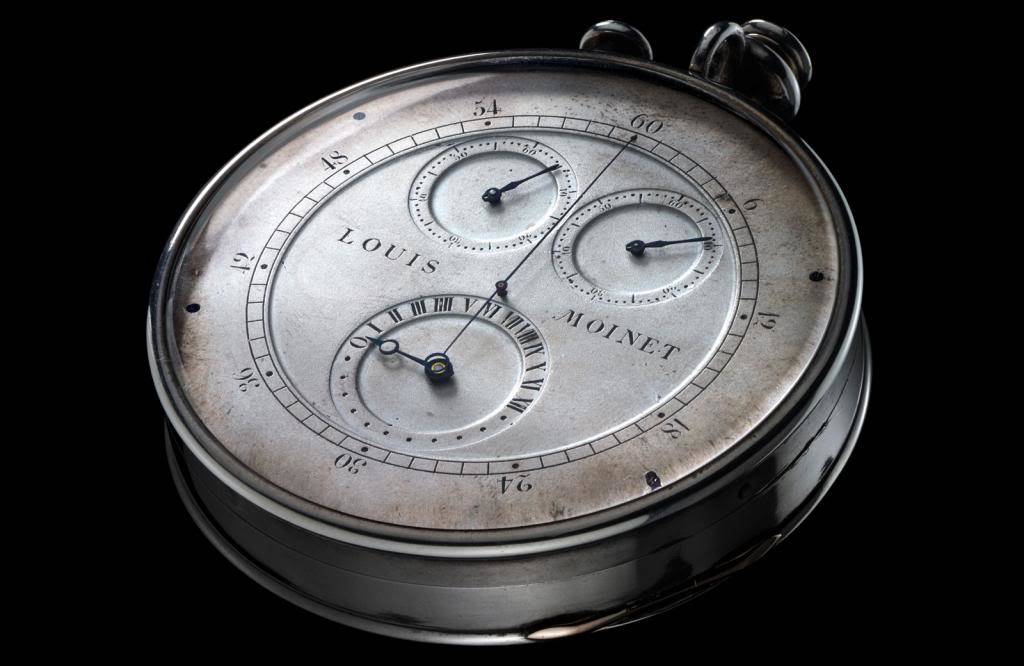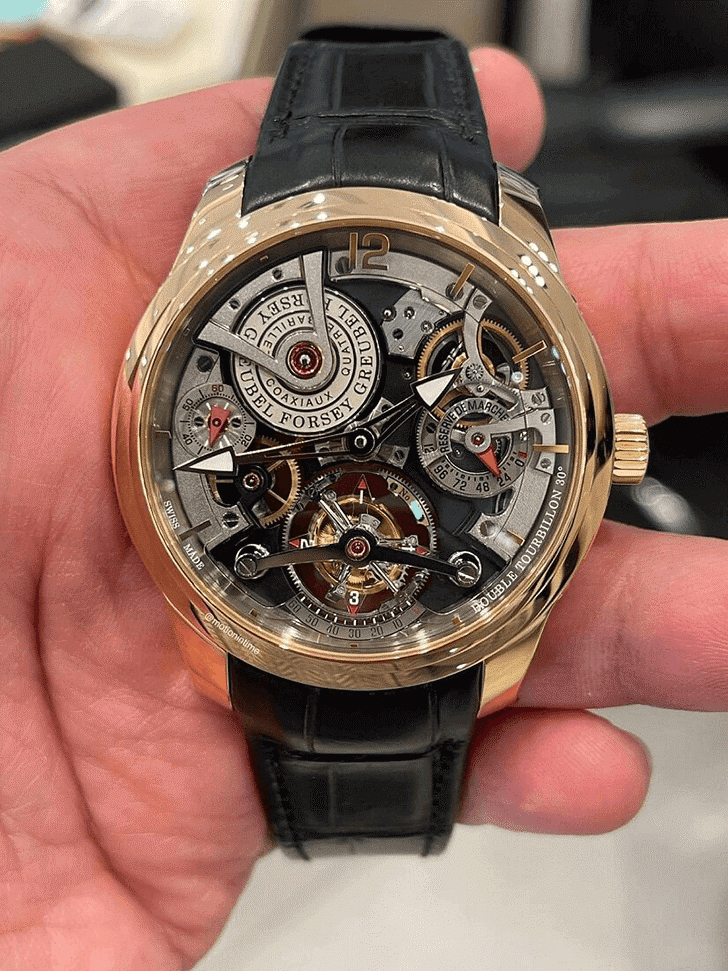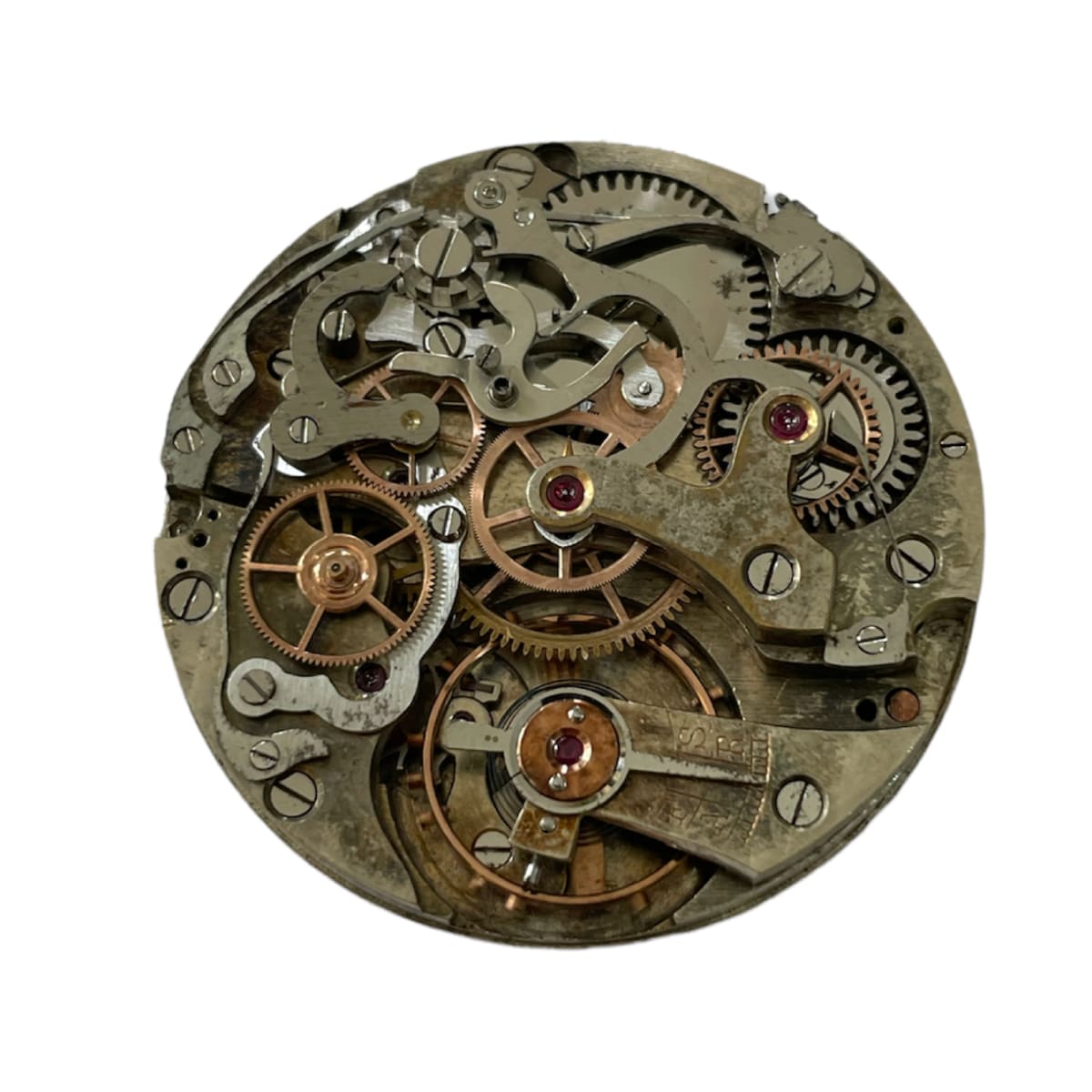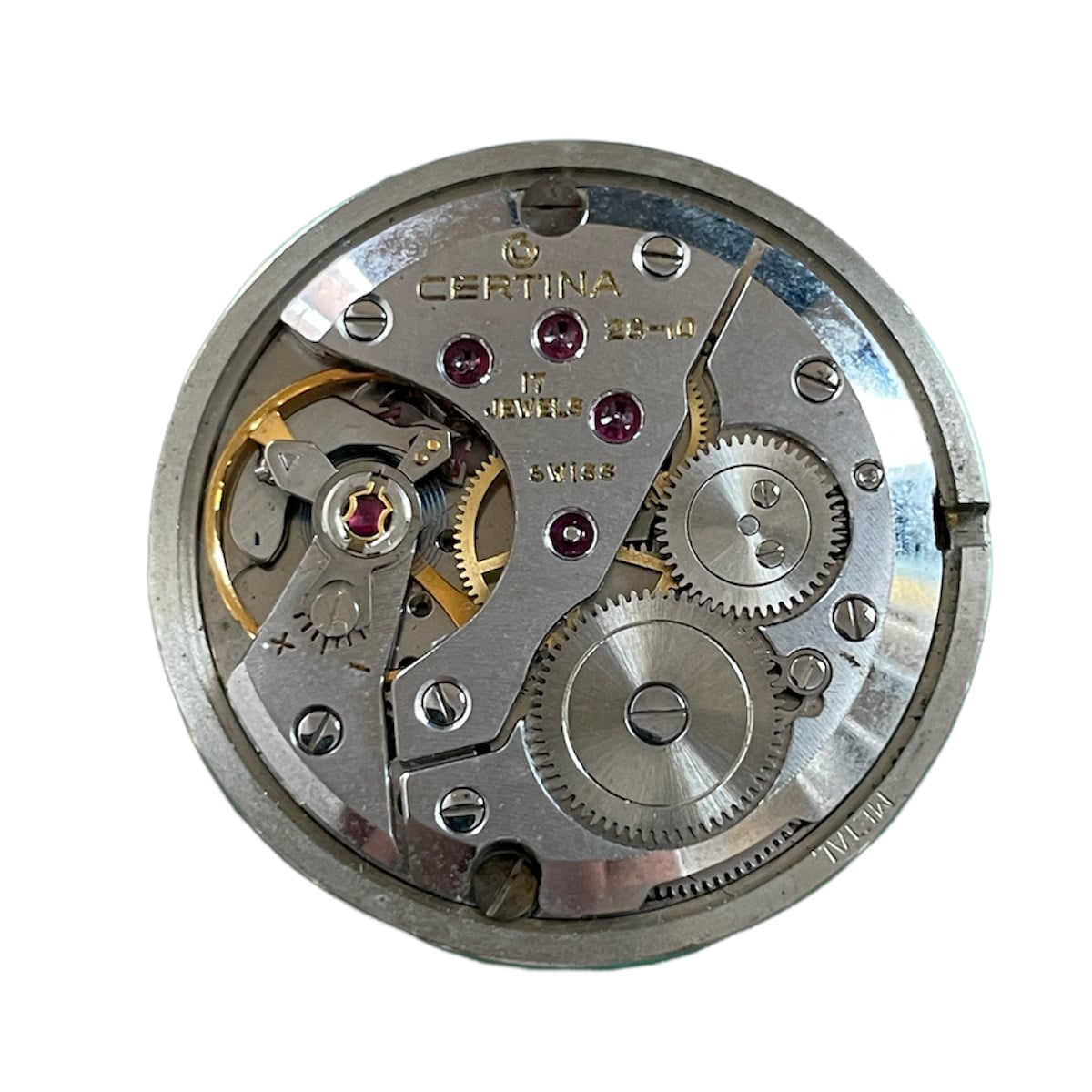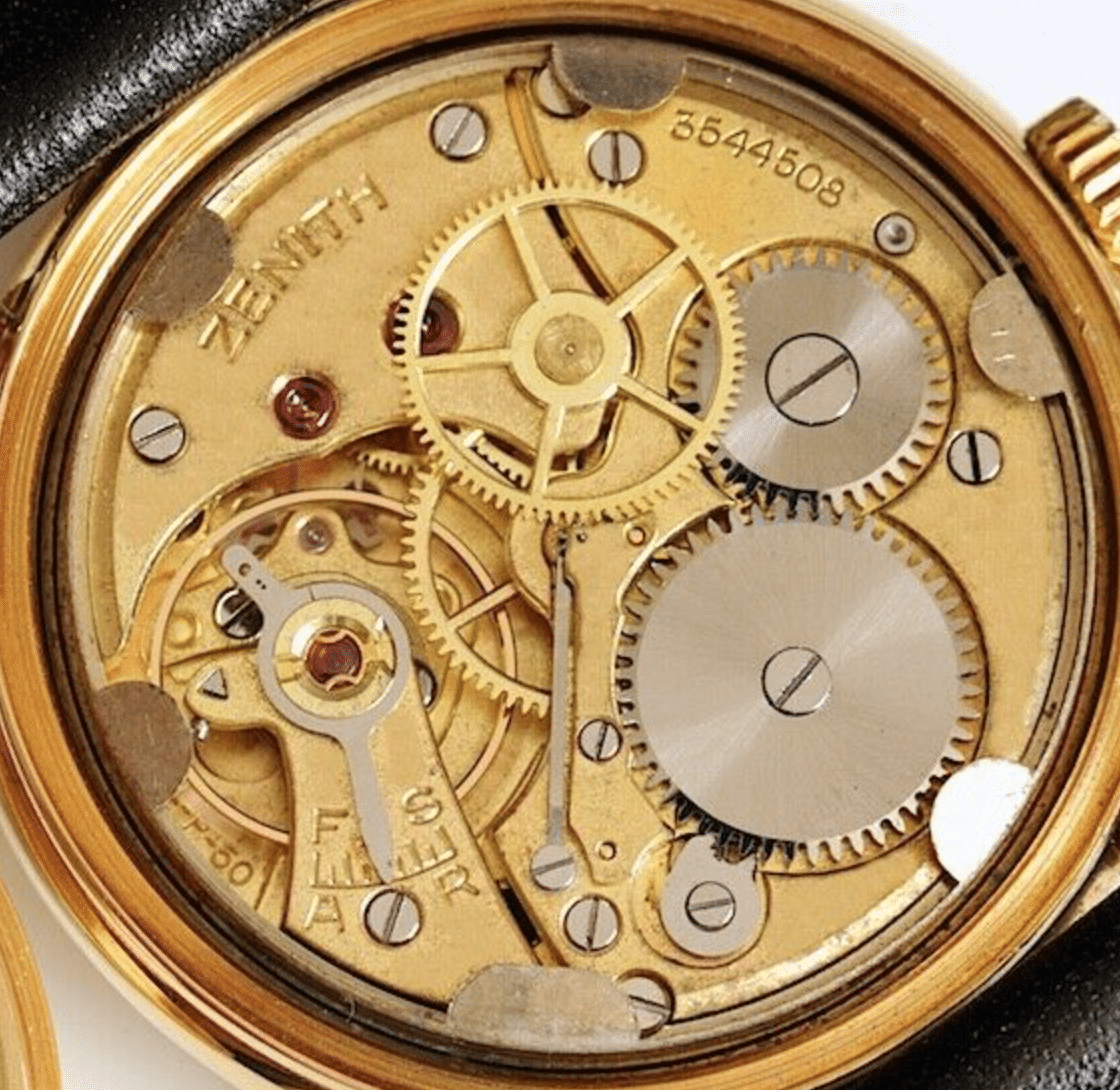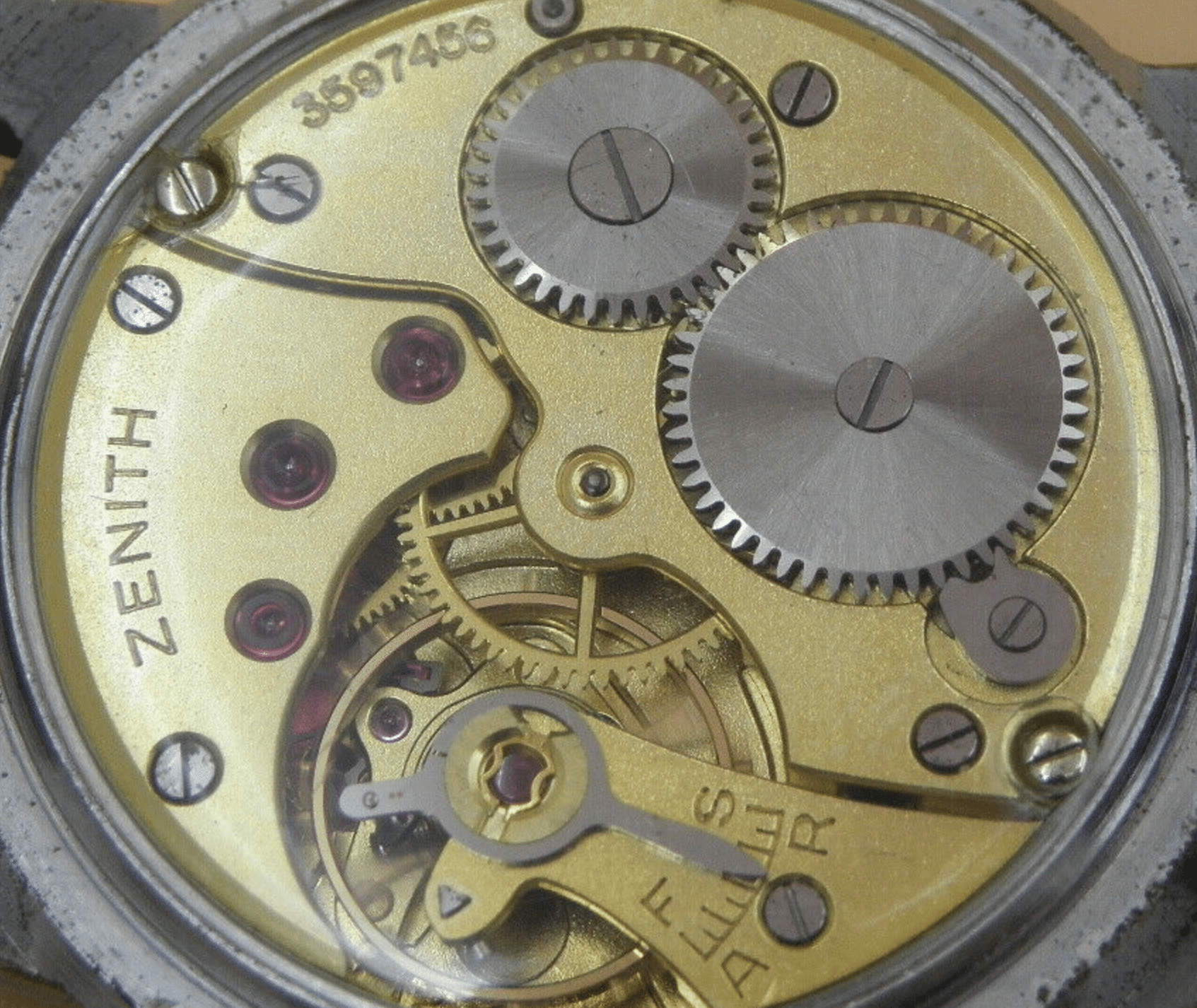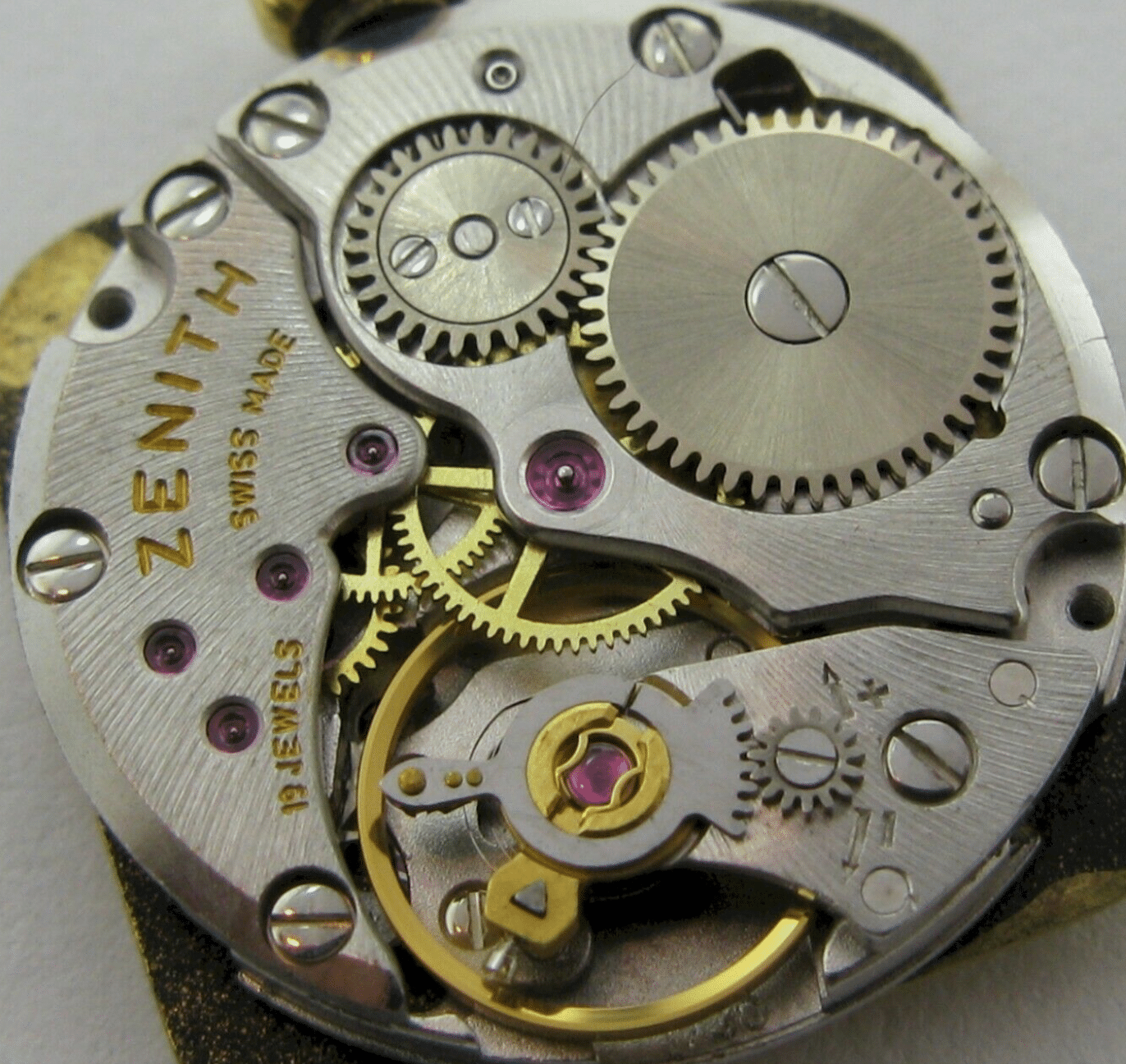When it comes to recording lapses of time there is one dominant complication – the chronograph. The common chronograph features its own seconds hand, minute hand (often) and hour hand (occasionally). The counter is started, stopped and reset by pressing pushers on the caseband.
This chapter looks at the functional and technical variations of the chronograph, each designed to offer enhanced precision or additional readings. Many of these complications were developed as solutions to legitimate problems, providing pioneers and professionals with the ability to monitor their activities on land, sea and air with refreshing mobility. Today, with the availability of more accurate timing devices, they are of less use. Furthermore, when one considers that human reaction time is around 0.25 seconds, one can see how high performance chronographs are something of an oxymoron. Nevertheless, they still have their place in the hearts of watch enthusiasts.

The Louis Moinet Compteur de Tierces. A staggering feat of timekeeping technology from 1816, with a balance wheel that ran at 30Hz, ten times faster than the majority of precision mechanical watches today. The start button is integrated with the crown at 12 o’clock. At II o’clock is the zero-reset. Elapsed seconds and minutes are recorded on the I o’clock and II o’clock sub-dials. The sub-dial at 6 o’clock is a 24-hour register, split into roman numerals and pips. The view of the back reveals the hairspring, the two platinum weights beneath it, and the large central escape wheel.
